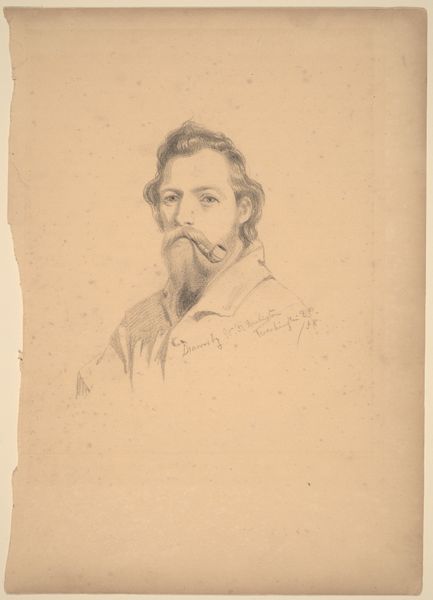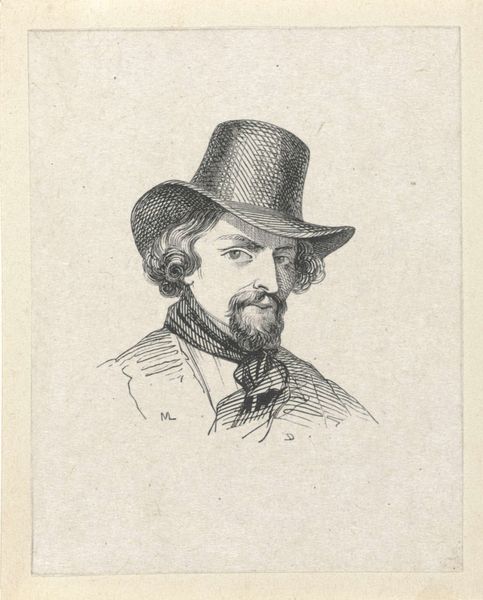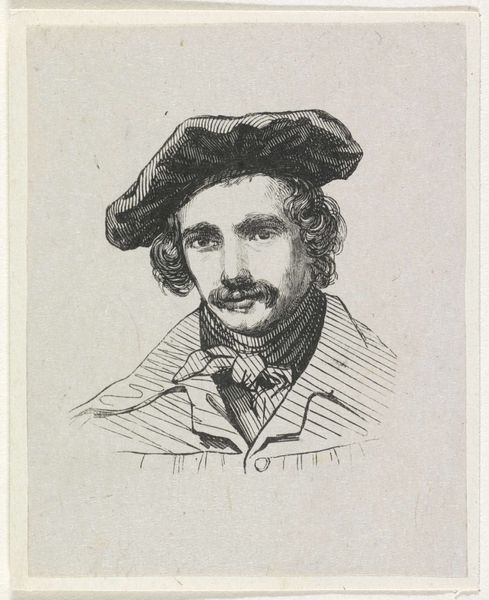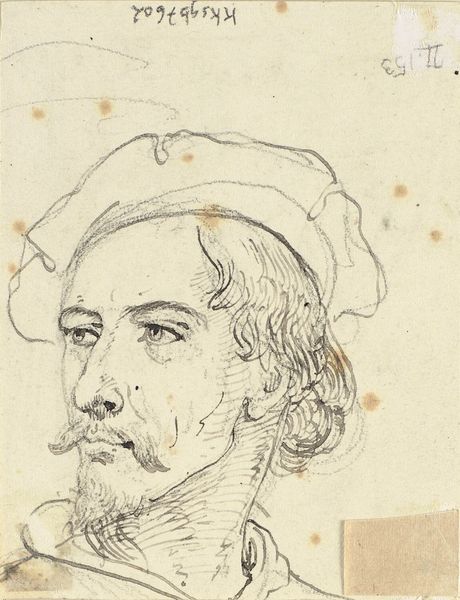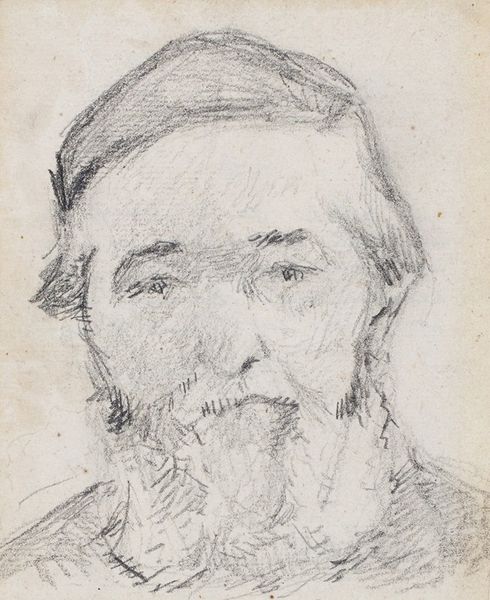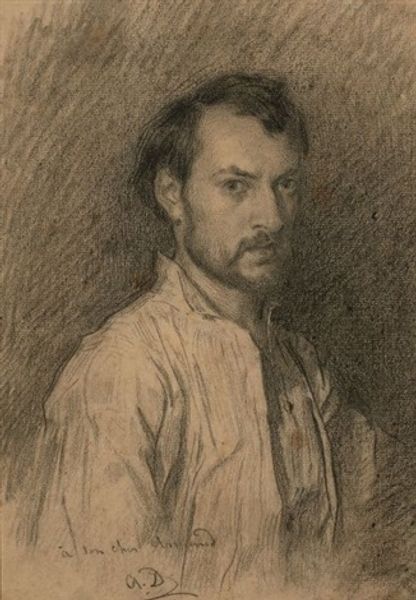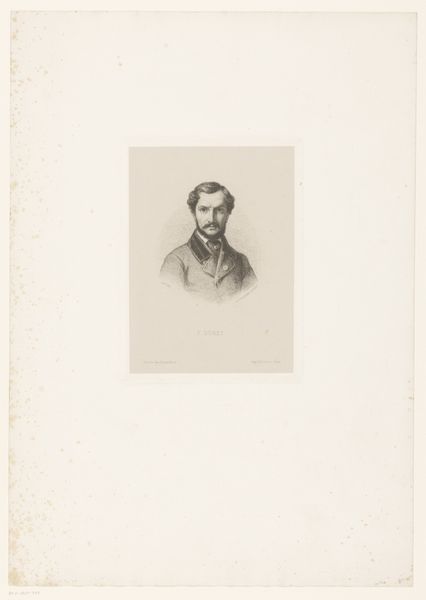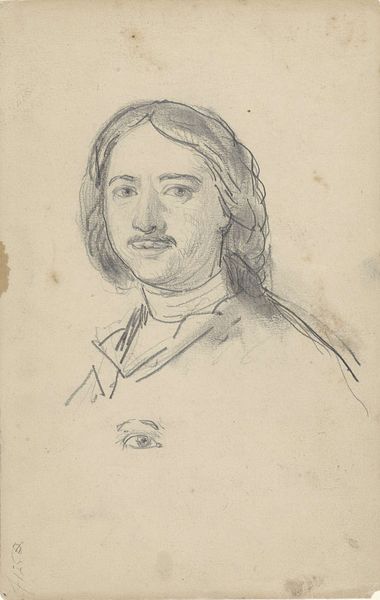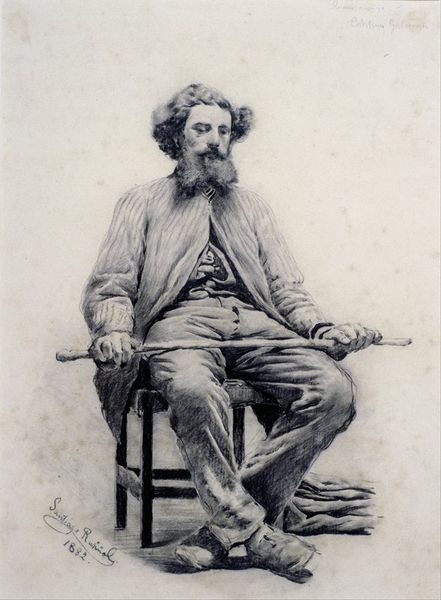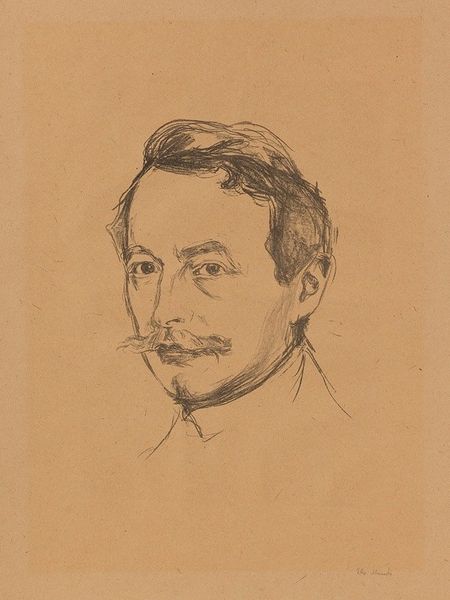
drawing, pencil, charcoal
#
portrait
#
drawing
#
pencil sketch
#
charcoal drawing
#
pencil drawing
#
romanticism
#
pencil
#
portrait drawing
#
charcoal
#
history-painting
#
academic-art
#
portrait art
Copyright: Public Domain: Artvee
Curator: This pencil sketch really strikes me with its directness, the subject looks like he could turn and speak to us. Editor: Indeed. What we’re seeing here is “Studie zu ‘Rüdiger und Angelika’,” a study made in 1842 by Johann Peter Krafft. Krafft was known for his history paintings, placing individuals in grand historical narratives. It's worth considering his status as a well-regarded academic artist during this period. Curator: The soft, hazy effect of the pencil contributes to the romantic mood. It's like looking back at a faded memory. It would be intriguing to know what significance Rüdiger and Angelika had in 1842; I wonder if there are popular cultural or historical associations here at work. Editor: Absolutely. Krafft's investment in historical themes situates him within the burgeoning nationalist movements of the 19th century. These weren't just personal portraits; they played a role in shaping national identity through romanticized, heroic figures. We have to consider how the rising museum culture also affected how artists produced images for public consumption. Curator: His hair, with its careful attention to texture and light, reads as more than a stylistic preference. There's almost a halo effect. What might the psychological function of depicting this man in such an idealised manner be? Editor: I think the halo effect you noticed is key to the painting’s public appeal. Consider, too, how images of famous people or celebrated figures helped establish visual cultures, which in turn shape ideas about history and heritage. Were this displayed, it would inevitably serve particular political or ideological ends in that society. Curator: Given Krafft's involvement in history painting, could this sketch have been destined to serve as source imagery or character reference, a step towards something bigger? Editor: Precisely! A study like this isn’t just about capturing a likeness; it’s about finding an ideal form. The image moves beyond simple resemblance to convey an individual’s virtues, linking him visually to larger historical values that can be appreciated in a public space. Curator: Viewing the piece from this perspective—tracing both its potential origins and its historical role—really amplifies its presence for me. Editor: Indeed. When we start looking into the symbols and the social setting for artworks such as this one, they acquire a much bigger weight than merely as depictions.
Comments
No comments
Be the first to comment and join the conversation on the ultimate creative platform.
